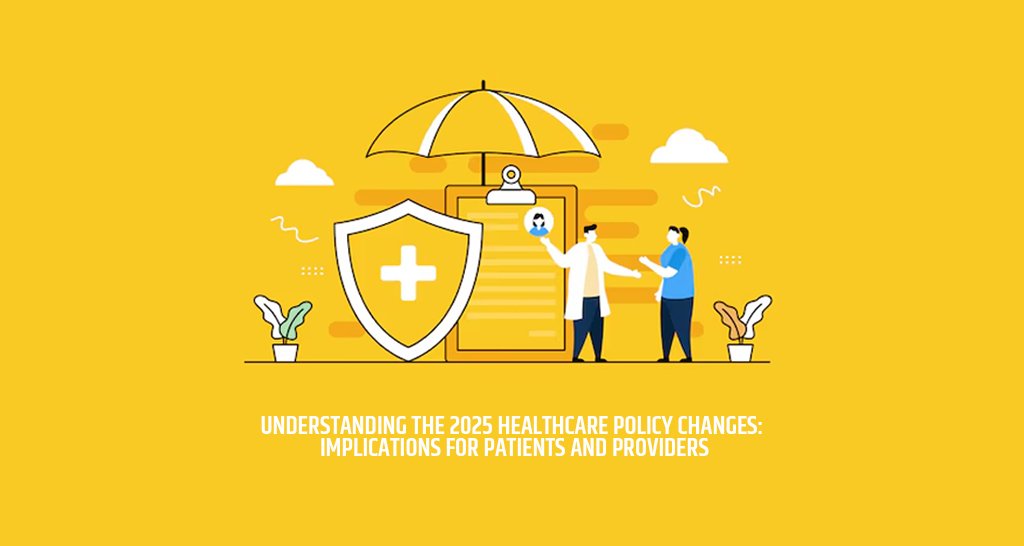Overview of the 2025 Healthcare Policy Changes
The 2025 healthcare policy changes represent a significant transformation in the healthcare landscape, focusing on enhancing the wellbeing of patients while promoting efficient service delivery by providers. One of the main objectives of these reforms is to increase accessibility to healthcare services for all individuals, irrespective of their socioeconomic status. This shift is driven by a growing recognition of the disparities present in the current healthcare system and the need to address them comprehensively.
An essential aspect of the 2025 healthcare policy changes is the expansion of insurance coverage. Enhanced policies aim to provide a wider range of options to patients, ensuring that they have access to necessary medical services without facing prohibitive costs. This includes an emphasis on preventive care, which will not only improve health outcomes for individuals but will also potentially reduce long-term costs associated with more severe health issues.
Moreover, the policy reforms aim to safeguard patient rights. This entails a commitment to transparency in healthcare practices, enabling patients to make informed decisions regarding their health. Patients will benefit from clearer communication about their treatment options and associated costs, thereby fostering a more patient-centered approach to healthcare. Additionally, providers are expected to adhere to stricter guidelines that prioritize patient consent and autonomy, ensuring that patients are actively involved in their care plans.
Another critical focus of the reforms includes technology integration within healthcare systems. The anticipated changes are expected to promote the adoption of telehealth services and electronic health records, streamlining processes and improving the overall patient experience. This integration aims to optimize resource allocation and enhance access to care, particularly for underserved populations. Overall, the 2025 healthcare policy changes showcase a robust strategy designed to reshape the healthcare system, addressing key issues while prioritizing the health and rights of patients.
Impact on Patients: What to Expect
The upcoming healthcare policy changes in 2025 are set to bring significant alterations that will directly affect patients across the board. One of the most noticeable impacts will be the adjustment in insurance premiums. As policies evolve, many patients may encounter fluctuations in their monthly costs, which can create a burden for some, especially those in lower-income brackets. It is essential for individuals to stay informed about what these changes entail, as some may qualify for subsidies or assistance programs that could alleviate increased expenses.
Access to care is another critical aspect that will be influenced by the 2025 healthcare reforms. Patients should prepare for potential shifts in their current healthcare provider networks. Some may find that their trusted healthcare practitioners are no longer part of their insurance plan, leading to the necessity to seek new providers. As a result, it is crucial for patients to proactively assess the network and evaluate their options to ensure they receive the appropriate care.
In terms of the quality of services provided, the new policies aim to enhance care standards while promoting better health outcomes. This could mean increased focus on preventive care and chronic disease management, which are essential components of patient-centered healthcare. However, with all enhancements, there may be challenges in the transition period. Patients must be vigilant about their rights under the new policies, as knowing these rights can empower them to advocate for the quality of care they deserve.
Peer support groups, informational webinars, and local health fairs are excellent resources that patients can utilize to gain further insight into these changes. By being proactive in understanding the 2025 healthcare policy shifts, patients can navigate potential challenges more effectively and take advantage of new benefits designed to enhance their healthcare experiences.
Implications for Healthcare Providers
The 2025 healthcare policy changes promise significant transformations that will undoubtedly affect healthcare providers across the spectrum, including physicians, hospitals, and outpatient clinics. One of the most prominent shifts centers around reimbursement methods. The introduction of value-based care models is set to alter how providers receive compensation, as they will increasingly need to demonstrate improved patient outcomes rather than simply report the quantity of services rendered. This trend towards value-driven reimbursement emphasizes quality management and clinical effectiveness, compelling providers to adopt more rigorous performance metrics. As a result, healthcare organizations will need to invest in advanced data analytics tools and performance tracking systems to align with these new standards.
In addition to adjustments in reimbursement strategies, the changes in administrative processes warrant considerable attention. The 2025 healthcare policy reforms are likely to streamline certain procedures while imposing new regulatory requirements that necessitate the upskilling of administrative staff. Providers may find themselves needing to implement electronic health records (EHR) enhancements or new forms of patient data management to comply with the evolving policies. These administrative adjustments not only aim to increase operational efficiency but also to improve patient care quality and accessibility.
Another critical aspect involves potential shifts in patient volume driven by policy changes such as expanded insurance coverage and alternative care delivery models. Providers may experience fluctuations in demand for services, particularly if certain populations gain improved access to healthcare. To prepare for these changes, hospitals and clinics should adopt flexible staffing models and develop strategic partnerships that can help accommodate variations in patient load. Understanding these implications and proactively adapting to them will be pivotal for healthcare providers aiming to maintain quality care while complying with the 2025 healthcare policy reforms. Through strategic planning and an emphasis on quality and efficiency, providers can navigate this transformative period successfully.
Future Outlook: The Long-Term Effects of the Policy Changes
The 2025 healthcare policy changes are poised to influence various aspects of healthcare delivery and patient outcomes for years to come. One of the most significant anticipated effects is the evolution of healthcare delivery models, particularly with a shift towards integrated care systems. These models aim to streamline services and enhance coordination among providers, potentially improving patient experiences and overall health outcomes. Enhanced integration may also facilitate better chronic disease management, as patients will have more cohesive support from healthcare teams.
In terms of costs, the long-term implications of these changes could lead to a transformation in how healthcare expenditures are managed. As value-based care becomes more prevalent, it is likely that both providers and patients will become more engaged in the financial aspects of care. This could precipitate a reduction in unnecessary procedures and lower overall healthcare costs, benefitting both patients and the broader economy. Additionally, increased transparency in pricing may empower patients to make more informed decisions regarding their health, which could lead to smarter spending on healthcare services.
The anticipated improvements in patient outcomes may also significantly alter the public health landscape. With a focus on preventive care and population health initiatives embedded in the 2025 policies, there is potential for enhanced community health metrics. As health disparities are addressed through policy measures, we may witness a positive shift in overall health equity within the population.
Moreover, these healthcare policy changes will likely spur further policy development. Policymakers may respond to emerging trends and outcomes, adjusting regulations and funding to better support the evolving healthcare environment. In conclusion, the long-term effects of the 2025 healthcare policy changes will extend far beyond immediate implications, shaping the future of healthcare delivery, costs, and public health for years to come.



